Clemson Extension agents provide updates in the The South Carolina Grower this week about the status of various crops being produced throughout the state.
Weekly Field Update-4/12/21
Statewide
Dr. Matt Cutulle reports, “I am starting to see some goosegrass popping due to soil temperatures being 65 degrees Fahrenheit. Goosegrass will typically be problematic in more compacted areas of the field. In most broadleaf crops, a Select or Poast post-emergent application will control emerged goosegrass. PRE-herbicide options include Curbit and Dual Magnum (If crop is labeled). In rice, it is important to remember that Quinclorac products will kill crabgrass but not goosegrass. The best rice product that will control goosegrass effectively in SC is Clincher.”
Coastal
Rob Last reports, “Crops are generally doing well in the area, with strawberries coming off with good volumes. On the whole, row covers or icing protected 97% of the susceptible flowers leading to 1% to 2% losses of flowers. The damaged flowers can increase grey mold pressure in the crops so maintaining both sanitation and fungicide applications to strawberries will be crucial. As berries ripen, sanitation also becomes essential for reducing pest pressure from sap beetles. In some crops, where row covers were utilized, we see spider mite populations increasing and a few active thrips feeding on both flowers and berries. Other fruit crops in the area, such as blackberries and blueberries, look very good with low levels of damage from the freeze event last weekend. Peaches in the area are being thinned, with scouting being maintained for scale and plum curculio. Early planted watermelons did suffer from the frost in places, leading to 10% to 15% plant loss and hence the need to replant in a few areas. Other crops are moving slowly away from the injuries. Luckily, a lot of crops were not beginning to vine and survived the worst of the damage. These plants are stressed, so care will be needed with any applications as well as scouting for pest and disease issues. Conversely, cantaloupes in the area were direct seeded and have survived unscathed.”
Zack Snipes reports, “I was out and about last week as things are moving rather quickly in the fields. Spider mites are alive and active in every strawberry patch that I was in last week. You will see the translucent mite with two distinct spots as well as a reddish colored mite. The reddish colored mite is actually a two-spotted spider mite. We see this red form early in the season. Get out and scout, as the weather is perfect for them. I am also seeing strawberry plants wilting down and dying. If you cut the crown you will see a brown/red rot in the center of the crown. Send these plants off for diagnosis. Most of what I have seen has been Phytophthora. We lost some cucurbit crops to the frost last weekend, but some areas had no damage at all or slight damage. For some positive news, we are cutting some beautiful broccoli right now.”
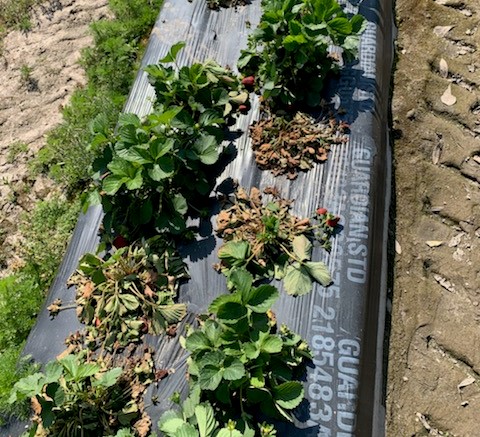
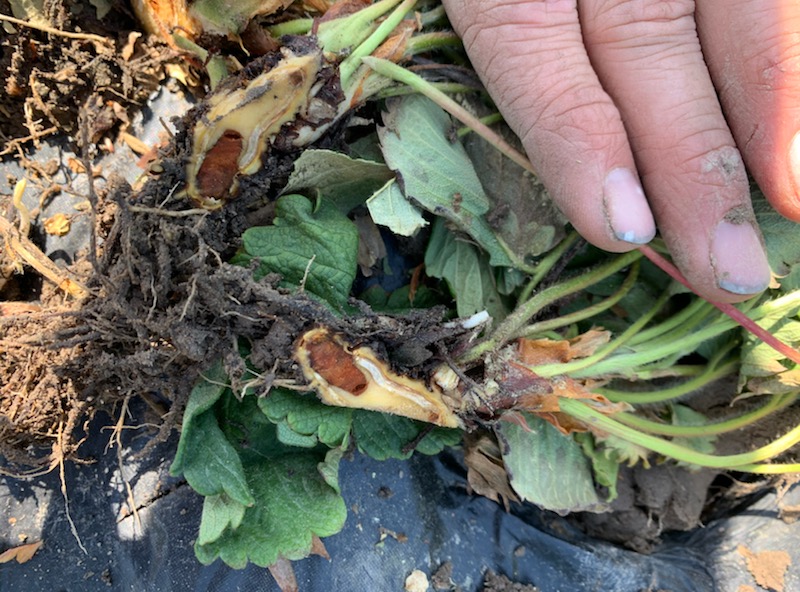
Midlands
Justin Ballew reports, “Strawberry picking started on a wider scale this past week. This conveniently coincided with spring break for a lot of the public schools in our area, so U-pick operations have been busy. The weather was very mild last week, so everything is looking great. Spider mite and grey mold activity seems to be very low. There are a few thrips in certain places, so that’s something we need to keep an eye on. Brassicas are growing well. Caterpillar populations are still pretty low in most spring planted crops. There was a little injury to sweet corn from the recent frosts, but we expect the plants to grow out of it. Sweet corn’s growing point is underground until the 6 leaf stage. Since pretty much all the sweet corn was at the 3 leaf stage or younger, the growing points were protected and the damage is just superficial.”
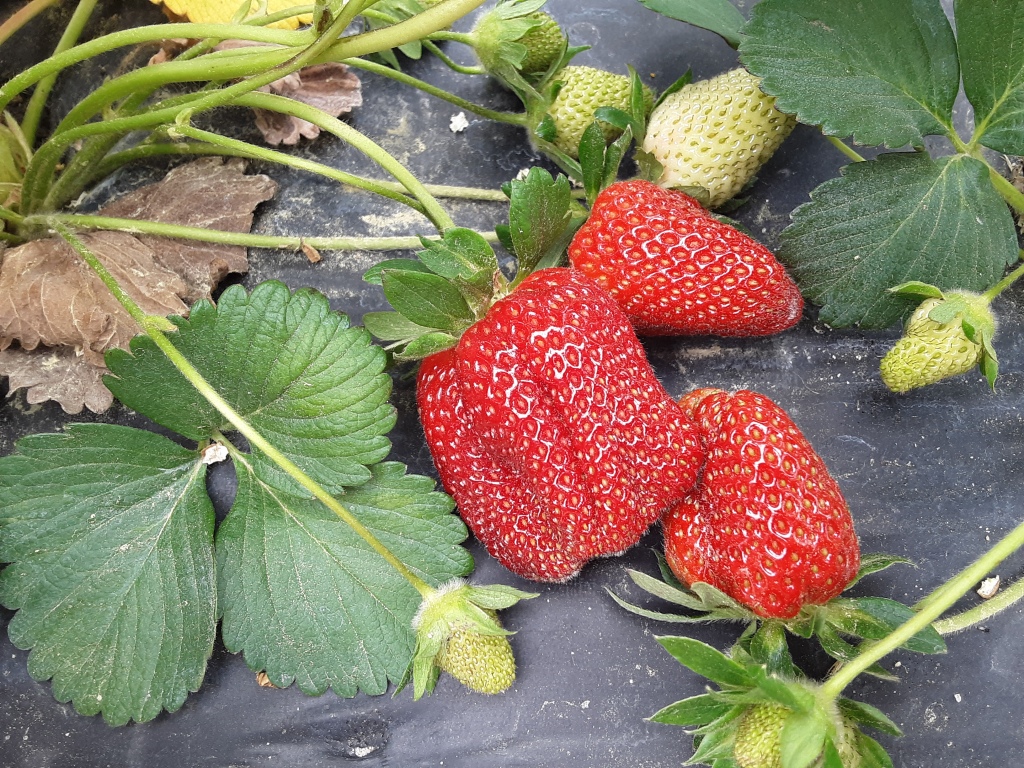
Sarah Scott reports, “We are still assessing peach crop damage from freeze events happening between April 1 and April 3. It looks like anywhere from 1/4 to 1/3 of fruitlets were damaged by the cold event, but with no additional damage we should still be on track for a good crop this year. Strawberries were delayed a bit from the cold but are recovering nicely. Planting continues for crops like kale and other spring greens.”
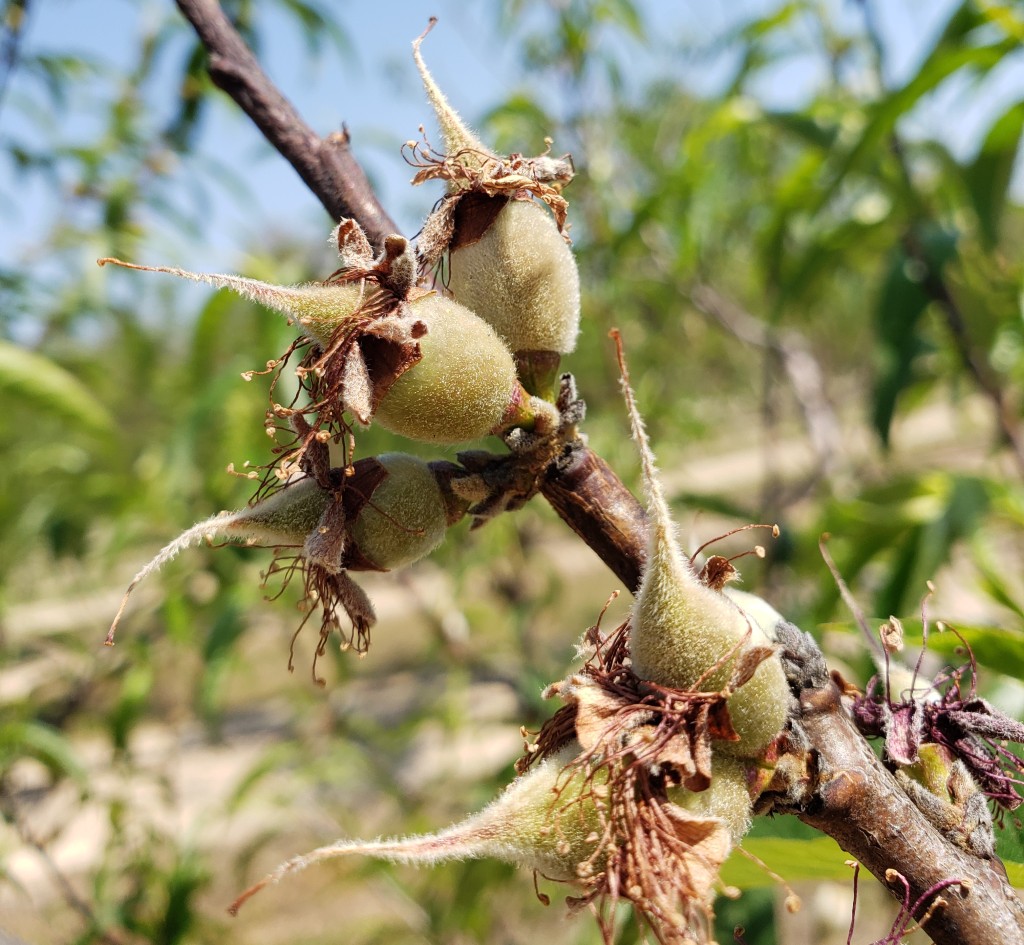
Pee Dee
Bruce McLean reports, “Strawberries are really starting to come off. The quality is very good, and the plants are in good health. Disease is relatively low, and spider mite activity is moderate. Damage was minimal from the freeze before Easter. We did see some damage on blueberries, though. Blueberries without frost protection (in especially cold locations) did see some significant injury to both early southern highbush and early rabbiteye cultivars. Injury of 80% was observed in Star and O’Neal (southern highbush) and Premier (rabbiteye). Blueberries with frost protection fared much better. This shows the importance of having well-designed frost protection if you are going to grow early-blooming cultivars. Muscadines, being at budbreak, did not show any significant injury. Farmers are taking advantage of this absolutely beautiful weather to plant vegetables. Sweet corn, peas, butterbeans, cucumbers, squash, melons, tomatoes, etc. are going in the ground as fast as they can. Blueberries are being planted now, too.
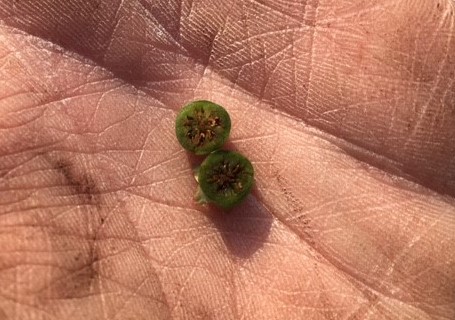
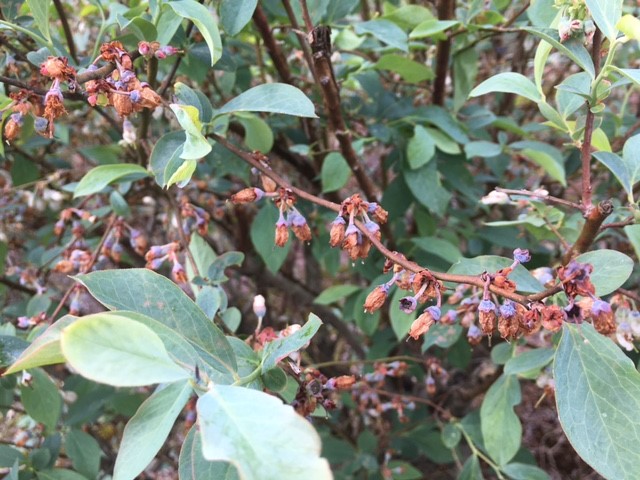
Tony Melton reports, “Most strawberries are doing well and really starting to produce a lot of fruit. Cabbage is starting to head and is growing well. Brassica growers are applying products for diamondback moth and Sclerotinia. Some pickles are emerging and many acres will be planted this week. Some butterbeans are up, and more are being planted. We will start to plant peas this week. Cool temperatures slowed sweet potato slip growth a little, but most beds are covered with slips. Collards, turnips and kale are growing fast. Hundreds of acres of tomatoes and peppers are already planted. A few acres of watermelons and cantaloupes are planted, but our main market is after the 4th of July.”









